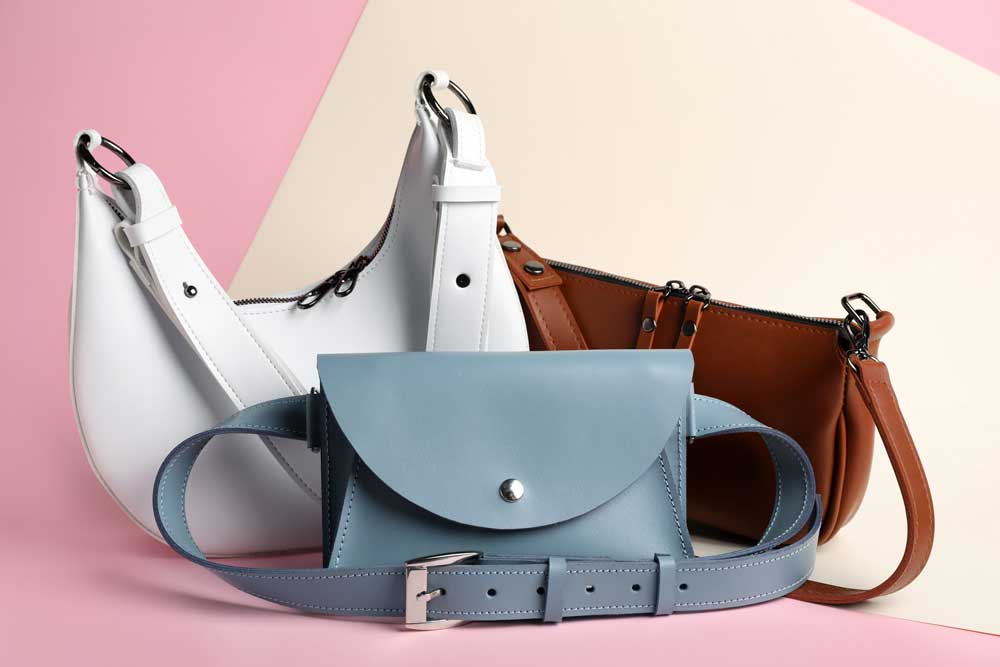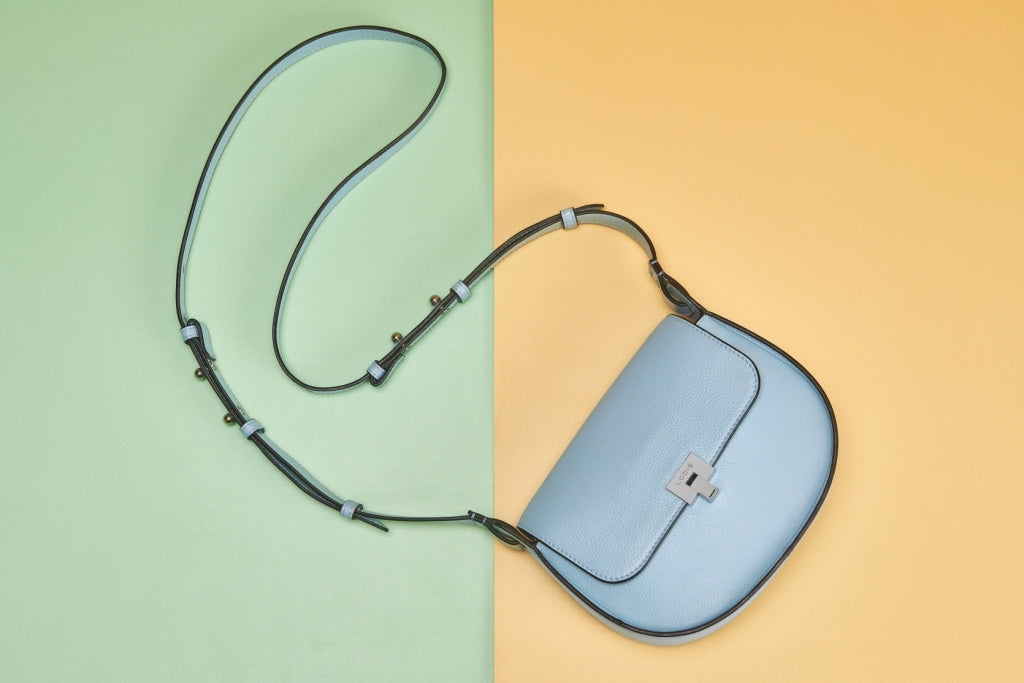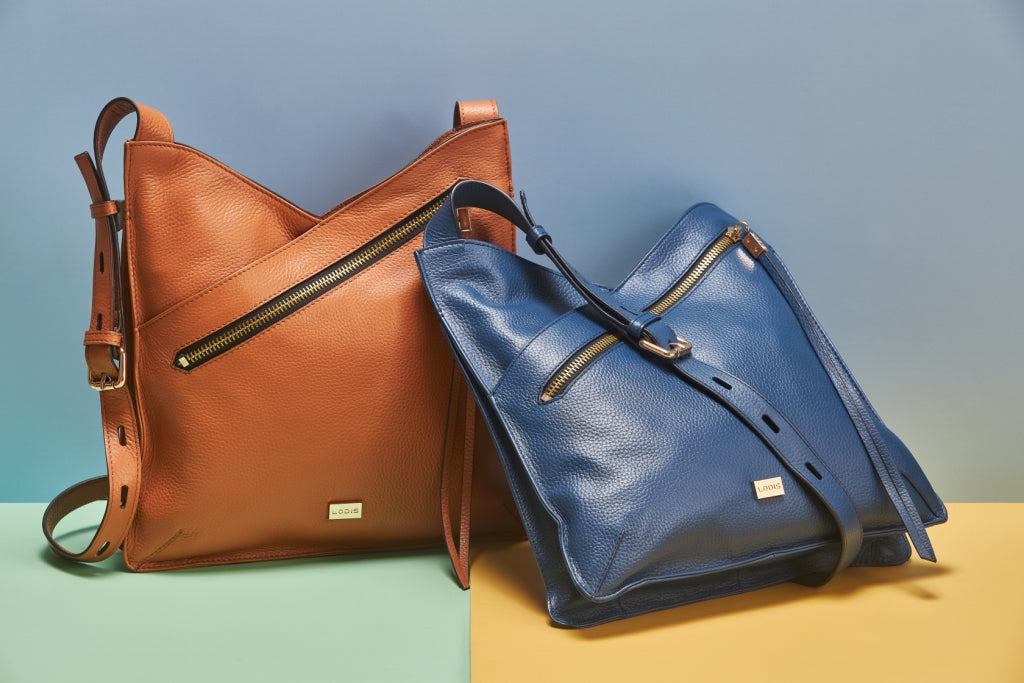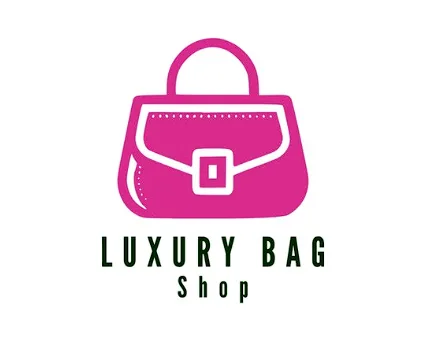News
The Evolution of Women’s Handbags: From Function to Fashion
Part 1: The Historical Journey of Women’s Handbags
Introduction: Bags as Both Utility and Symbolism
Throughout human history, people have needed a way to carry things. Whether it was food, tools, or personal belongings, some form of container has always existed. For women in particular, the bag has held a special place—not only as a functional item but also as a reflection of identity, culture, and eventually, fashion. The handbag we know today is not just an accessory; it is a culmination of centuries of social change, craftsmanship, and style evolution.
Tracing the journey of handbags reveals how they transformed from simple pouches tied around the waist into iconic fashion statements worth thousands of dollars. The evolution of women’s handbags is not just about leather and stitches; it is about the interplay between society’s expectations of women, changing lifestyles, and the eternal human desire to blend practicality with beauty.
Early Beginnings: Pouches and Pockets in Ancient Civilizations
Handbags, in their earliest forms, were nothing more than pouches. Archaeological evidence suggests that people in ancient Egypt, Rome, and Mesopotamia carried small leather or fabric bags to hold coins, food, or tools. These were usually worn on belts or tied with cords. For women, especially in ancient Egypt, bags were often decorated with beads and embroidery, suggesting that even then, functionality was paired with ornamentation.
In many cultures, these early pouches symbolized wealth and status. A finely crafted pouch indicated prosperity, while a plain one suggested modest means. They also had practical uses: Egyptian women used bags to carry cosmetics, while Roman women carried keys and small personal items in pouches hidden within their clothing.
This period was less about fashion and more about necessity. Yet, the seeds of fashion were already there—embellishment, material choice, and personal flair hinted that handbags would one day evolve into symbols of style and luxury.
Medieval and Renaissance Handbags: From Hidden Purses to Ornate Designs
By the Middle Ages, bags became more specialized. Both men and women carried pouches, often attached to belts. These “alms purses” were used to carry coins that could be donated to the poor, reflecting the deeply religious culture of the time. For women, handbags were typically small, discreet, and functional.
The Renaissance, however, ushered in more decorative designs. As clothing styles became more elaborate, so did accessories. Women carried small bags embroidered with intricate patterns, jewels, and even family crests. These bags were not only containers but also displays of artistry and wealth.
Interestingly, this was also the period when women’s clothing started incorporating sewn-in pockets. For many, this reduced the need for external bags. Yet, for occasions where visibility mattered—such as court appearances or social gatherings—carrying an ornate handbag was a way to display refinement.
The 18th and 19th Centuries: Handbags as Social Status Symbols
The 18th century marked a turning point in handbag history. Women’s fashion shifted toward slimmer silhouettes, which eliminated the bulky hidden pockets in dresses. This created a new demand for external bags. Enter the reticule—a small, delicate handbag carried by women to social events. Reticules were often made of silk, velvet, or fine fabrics, decorated with embroidery or lace. They were just big enough to hold a handkerchief, fan, and perhaps a vial of perfume.
At first, reticules were ridiculed by critics who mocked them as impractical and overly feminine. But they quickly became fashionable, and soon no lady of high society would attend an evening gathering without one. Reticules symbolized both refinement and the emerging independence of women, who were beginning to carry their own personal belongings rather than relying on male companions.
In the 19th century, the Industrial Revolution changed everything. Travel became more common, and women required sturdier bags. Leather handbags with metal frames emerged, offering more durability and space. Around this time, luxury brands like Louis Vuitton began producing high-quality luggage and handbags, establishing a tradition of craftsmanship that still defines luxury fashion today.
Handbags now reflected a woman’s social standing. A finely crafted bag was a visible sign of wealth and taste, while cheaper alternatives suggested modest means. Carrying a handbag was no longer just about utility—it was about identity.

The 20th Century: Industrialization, Fashion Houses, and Iconic Designs
The 20th century was the true golden era of handbags. As women gained more independence, joined the workforce, and traveled more widely, their handbags evolved to meet these needs. Fashion designers recognized the opportunity and began to create handbags not just as functional objects but as central elements of style.
-
1920s: The flapper era brought small, beaded evening bags that matched the glitz of jazz-age fashion. Women carried compact bags to dance halls and cocktail parties.
-
1930s–1940s: Wartime practicality led to larger, sturdier bags made from practical materials. Women needed space for ration books, cosmetics, and personal essentials.
-
1950s: Post-war prosperity brought a return to elegance. Iconic designs like the Hermès Kelly bag and the Chanel 2.55 emerged, combining luxury with practicality. These became timeless classics still coveted today.
-
1960s–1970s: Fashion became more experimental. Bright colors, unusual shapes, and nontraditional materials like plastic and vinyl reflected cultural revolutions. The rise of feminism also influenced handbag design, with larger and more versatile bags suited for working women.
-
1980s–1990s: The logo craze began. Designer handbags became must-have status symbols. Gucci, Prada, and Louis Vuitton dominated, with logos displayed boldly. A handbag was no longer just a fashion item; it was a public declaration of wealth and success.
By the end of the century, the handbag had become one of the most important accessories in fashion, as essential as shoes or jewelry.
Modern History: Luxury Branding, Celebrity Influence, and Mass Production
The late 20th and early 21st centuries solidified the handbag’s role as both a cultural phenomenon and a fashion powerhouse. Luxury brands transformed bags into investment pieces, with certain designs gaining legendary status and waiting lists stretching for years. For example, the Birkin bag by Hermès became a global symbol of exclusivity and wealth.
Celebrity influence also skyrocketed. Paparazzi photos of stars carrying designer bags fueled demand. The “It Bag” era of the early 2000s saw designs like the Fendi Baguette, Dior Saddle Bag, and Balenciaga City Bag become cultural icons. Suddenly, a handbag could define an entire season of fashion.
At the same time, fast fashion brands began mass-producing affordable imitations, making stylish bags accessible to everyone. This democratization blurred the lines between high fashion and everyday style. For the first time, women at all income levels could participate in handbag culture.
Summary: From Function to Fashion
Looking at the journey of handbags through history, one thing becomes clear: they have always been more than containers. In every era, they reflected the roles, freedoms, and aspirations of women. From the simple pouches of ancient times to the opulent reticules of the 18th century, from the utilitarian war bags of the 1940s to the luxury icons of today, handbags have evolved alongside women’s lives.
What started as pure function has transformed into one of the most significant symbols of fashion. Handbags now embody artistry, empowerment, and personal expression. They hold not only our belongings but also our histories and ambitions.
Part 1 of this journey shows how deeply interwoven handbags are with the evolution of society itself. And as we move into the present, the story only becomes richer—blending culture, technology, and modern values.
Part 2: Contemporary Handbags and Their Cultural Impact
Handbags in Today’s Society: Beyond Utility
In the modern world, handbags are no longer simply containers for daily essentials. They have evolved into one of the most significant fashion items, central to personal style and cultural identity. Today’s woman may carry her phone, wallet, makeup, and laptop in her bag, but she also carries her sense of self. A handbag can communicate status, taste, values, and even political stance.
In cities around the globe, a handbag has become a daily companion. Whether it’s a luxury designer piece or a practical tote from a sustainable brand, the bag is a reflection of the modern lifestyle—fast-paced, diverse, and expressive. Unlike in the past, when a bag’s function was its primary purpose, today, its symbolic value is just as important as its utility.
Handbags as Identity and Empowerment
Handbags often serve as an extension of a woman’s identity. The design, brand, and even the way it is carried all send messages about personality and lifestyle. A minimalist leather tote might suggest professionalism and practicality, while a bright, quirky crossbody might indicate playfulness and creativity.
More importantly, handbags have become linked to women’s empowerment. Carrying a bag that is truly “hers”—with her essentials, her money, her choices—symbolizes autonomy. Historically, when women began carrying their own handbags in the 19th century, it marked a step toward independence. Today, this symbolism remains powerful.
Celebrities and public figures have further amplified this narrative. Think of how a politician’s handbag becomes a symbol of authority, or how a fashion influencer’s choice of a sustainable bag sparks conversations about ethics and responsibility. In each case, the handbag is more than an accessory—it is a voice.
The Rise of Designer Culture and Logo Obsession
The late 20th and early 21st centuries witnessed an explosion of “It Bags.” Designer culture took center stage, fueled by celebrity endorsements, paparazzi culture, and social media. Logos became shorthand for luxury and exclusivity. Carrying a Louis Vuitton monogram tote or a Gucci Dionysus was not just about function—it was a declaration of status.
This obsession with logos has been criticized for fueling materialism, but it also highlights the power of handbags as cultural symbols. For many women, owning a luxury bag represents achievement, aspiration, and recognition of personal success. It may take months or years to save for a Birkin, but the act of acquiring one is often celebrated as a milestone.
At the same time, this era also sparked debates about authenticity, counterfeit culture, and the role of consumerism in fashion. The “logo mania” trend revealed how deeply society ties self-worth and prestige to material possessions. And while logos still hold immense appeal, modern consumers are increasingly seeking balance between brand recognition and personal authenticity.
Everyday Practicality: Balancing Form and Function
Despite the dominance of luxury brands, everyday bags remain equally essential. Women today often juggle multiple roles—professional, caregiver, traveler, student, entrepreneur. A single handbag must often accommodate all these identities.
Designers have responded with bags that balance form and function. Structured totes large enough for laptops, lightweight backpacks for commuting, and convertible crossbody bags for travel reflect the realities of modern life. Functionality is no longer at odds with style; instead, the two coexist.
Moreover, practicality itself has become stylish. The rise of minimalist design reflects a preference for bags that are versatile, understated, and timeless. In a sense, everyday practicality has become its own form of fashion statement: a woman who carries a simple, functional bag often signals confidence and intentionality.

Handbags in Pop Culture and Social Media
Handbags today are inseparable from pop culture. In films, television, and music, bags often symbolize wealth, independence, or glamour. Consider the countless scenes of characters clutching designer clutches in red-carpet films, or the prominence of the Prada backpack in 1990s teen movies.
Social media has only amplified this influence. Instagram, TikTok, and YouTube are saturated with unboxing videos, “What’s in my bag?” content, and handbag reviews. The bag has become content, not just an accessory. For many influencers, a handbag is the central element of their personal brand.
This digital culture has democratized access to fashion. Women who cannot afford a luxury bag can still admire, engage with, and even rent or buy pre-loved versions thanks to online communities. Hashtags and viral challenges give handbags global visibility, making them not only fashion items but also cultural phenomena.
Sustainability and the Future of Handbag Design
Perhaps the most important cultural shift of our time is the rise of sustainability. As consumers become more aware of the environmental costs of fast fashion, they are demanding ethical alternatives. This has profoundly impacted the handbag industry.
Brands are now experimenting with eco-friendly materials such as recycled leather, plant-based textiles, and biodegradable fabrics. Startups are building reputations around sustainability, offering stylish yet environmentally responsible designs. Even major luxury houses are adopting circular fashion models, including repair services, recycling programs, and vintage resales.
This shift also influences consumer mindset. Instead of chasing endless trends, many women now prioritize quality, durability, and ethics. A sustainable handbag is not only functional and beautiful—it also signals values. Carrying such a bag communicates awareness, care for the planet, and conscious consumption.
The Handbag and Women’s Changing Lifestyles
Handbags continue to evolve alongside women’s roles. In the 21st century, women are global leaders, entrepreneurs, and digital nomads. They need bags that can transition seamlessly from office meetings to airport gates, from parent-teacher conferences to evening dinners.
This demand for versatility has given rise to hybrid designs. Convertible bags that switch from backpacks to crossbodies, totes with removable laptop sleeves, and even tech-integrated handbags with built-in chargers reflect how handbags must keep pace with modern life.
The modern handbag is no longer static—it adapts. It reflects not just who women are but also who they are becoming.
Conclusion of Part 2: The Cultural Power of the Modern Handbag
In contemporary society, the handbag is far more than a functional object. It is a powerful cultural artifact that reflects identity, empowerment, consumer culture, and sustainability. From the obsession with luxury logos to the quiet elegance of minimalist everyday bags, handbags tell stories about women, values, and lifestyles.
They are woven into pop culture, amplified by social media, and transformed by sustainability movements. They embody independence, creativity, and adaptability. The handbag is a mirror of society itself—always evolving, always speaking, always significant.
As we look toward the future, one thing is clear: handbags will continue to evolve alongside women’s lives, reflecting both the challenges and the triumphs of modern living.
Part 3: Conclusion – The Timeless Companion
The Handbag as a Timeless Companion
Over centuries, the handbag has transformed from a simple pouch to one of the most recognized symbols of fashion and identity. Yet, at its core, it remains a companion—practical, personal, and profoundly human. A handbag carries essentials, but it also carries memories, aspirations, and stories. Each bag, whether luxurious or everyday, becomes part of a woman’s journey.
The modern handbag is an extension of oneself. It reflects who a woman is, where she has been, and sometimes even where she hopes to go. A leather tote may represent professionalism and organization, while a vibrant crossbody may speak to creativity and playfulness. Through these choices, women express identity without uttering a word.
Reflection on the Journey from Necessity to Luxury
The handbag’s evolution mirrors societal changes. Ancient pouches were entirely utilitarian, designed to hold coins or tools. Medieval and Renaissance bags introduced decoration and social signaling. The 18th and 19th centuries marked the era of handbags as status symbols, reflecting women’s growing independence. The 20th century saw fashion houses and iconic designs, transforming handbags into coveted luxury items.
In contemporary times, the line between luxury and practicality blurs. Women now seek versatility, style, and ethical production, balancing aesthetic appeal with functionality. Bags are simultaneously a fashion statement and a tool of daily life, representing a seamless integration of utility and artistry.
Luxury handbags remind us of craftsmanship, legacy, and aspiration. Everyday bags teach adaptability, comfort, and mindfulness. Together, they demonstrate that fashion is not merely about appearance—it is about living a life that aligns with personal values, needs, and experiences.
Why Handbags Remain One of the Most Powerful Fashion Statements
The handbag is unique in its ability to communicate identity across time and space. Unlike clothing, which changes with body size and seasonal trends, a bag is durable and enduring. Unlike shoes or jewelry, a bag is intimate yet visible, carried and displayed in a way that is deeply personal.
Handbags carry not just possessions but also social meaning. A designer bag can indicate status, success, or taste. A functional tote can signify a pragmatic, organized lifestyle. A preloved bag may reflect environmental consciousness and appreciation for timeless design. In every case, the bag acts as a storyteller, conveying subtle messages about the wearer.
Social media has amplified this power. Instagram posts, TikTok videos, and fashion blogs showcase handbags as central elements of style narratives. “What’s in my bag?” videos reveal personalities, lifestyles, and choices, bridging the gap between personal utility and public display. Handbags have become instruments of self-expression, communication, and even community building.

Sustainability and the Modern Conscious Consumer
The future of handbags is increasingly tied to sustainability. Conscious consumers demand eco-friendly materials, ethical production, and long-lasting designs. Pre-loved luxury markets and upcycling initiatives allow women to enjoy style while reducing environmental impact.
This evolution signals a shift in values: fashion is no longer about accumulation for its own sake but about intentional, thoughtful choices. Bags are now judged not only on aesthetics or brand but also on their contribution to a sustainable and mindful lifestyle.
By embracing both practicality and luxury, by combining timeless pieces with everyday companions, women are redefining what it means to own a handbag. The modern collection is not about excess—it is about balance, quality, and self-expression.
The Handbag as a Reflection of Women’s Lives
Handbags are mirrors of changing roles, challenges, and aspirations. A professional woman’s tote may carry laptops, notebooks, and ambition. A mother’s diaper bag may carry snacks, wipes, and patience. A traveler’s backpack may carry passports, maps, and curiosity. In each scenario, the handbag adapts, supporting life’s demands while simultaneously expressing individuality.
This adaptability highlights the handbag’s enduring relevance. It evolves alongside society, reflecting social progress, cultural values, and personal growth. The handbag remains a faithful companion—flexible, stylish, and deeply connected to the human experience.
Final Thoughts: A Legacy of Style, Function, and Expression
The evolution of women’s handbags illustrates the delicate balance between form and function, utility and fashion, aspiration and reality. From ancient pouches to modern luxury icons, handbags have been central to the story of women, society, and culture.
Today, handbags continue to inspire, empower, and elevate. They are not merely fashion items—they are expressions of identity, tools of daily life, and symbols of independence and creativity. Every bag tells a story, whether it is an heirloom passed down through generations or a newly purchased tote that accompanies life’s daily adventures.
As fashion continues to evolve, one thing remains constant: the handbag’s role as a timeless companion. It will always carry our essentials, our memories, and our personal narratives. It will continue to adapt to our lifestyles, reflect our values, and express who we are. And in doing so, it will remain one of the most powerful and enduring symbols of style and self-expression in the world.

 Gucci Guilty Love Edition MMXXI EDT 50ml
Gucci Guilty Love Edition MMXXI EDT 50ml 